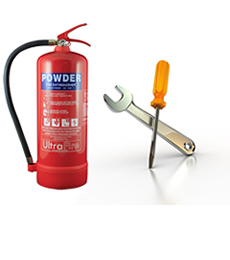Fire Extinguishers Guidance Chart
To provide you with information about which type of fire extinguisher you might need please look at the table below, all fire extinguishers have the body colour of signal red, and at least 5% of the body must be colour coded in the pre-EN3 (BS 5423) colours.

Additionally, the majority of fire extinguishers have a numerical rating which is based on tests conducted by professional fire-fighters that are designed to determine the extinguishing potential for each size and type of extinguisher.
In the instance of class ‘A’ fires, the numerical value is the size of fire in cubic metres that the extinguisher can put out.
For class ‘B’ fires the numerical value represents the amount of litres of flammable liquid that can be extinguished.
Class ‘C’ fires have no numerical value as flammable gas is very difficult to measure in cubic metres – it depends on the ratio of gas to air there is in the local atmosphere.
Class ‘D’ fires have a numerical value, this represents size of fire in cubic metres that the extinguisher can put out.
‘E’ Class fires have no numerical value – please remember once the source of the electricity is shut down, the electrical fire will revert to a different class.
The numerical value in ‘F’ class fires is the same as in ‘B’ class fires – it represents the amount of litres of flammable liquid (cooking oils etc) that can be extinguished.



Connect With Us
Mobile - 07941638880
Office - 01505673623